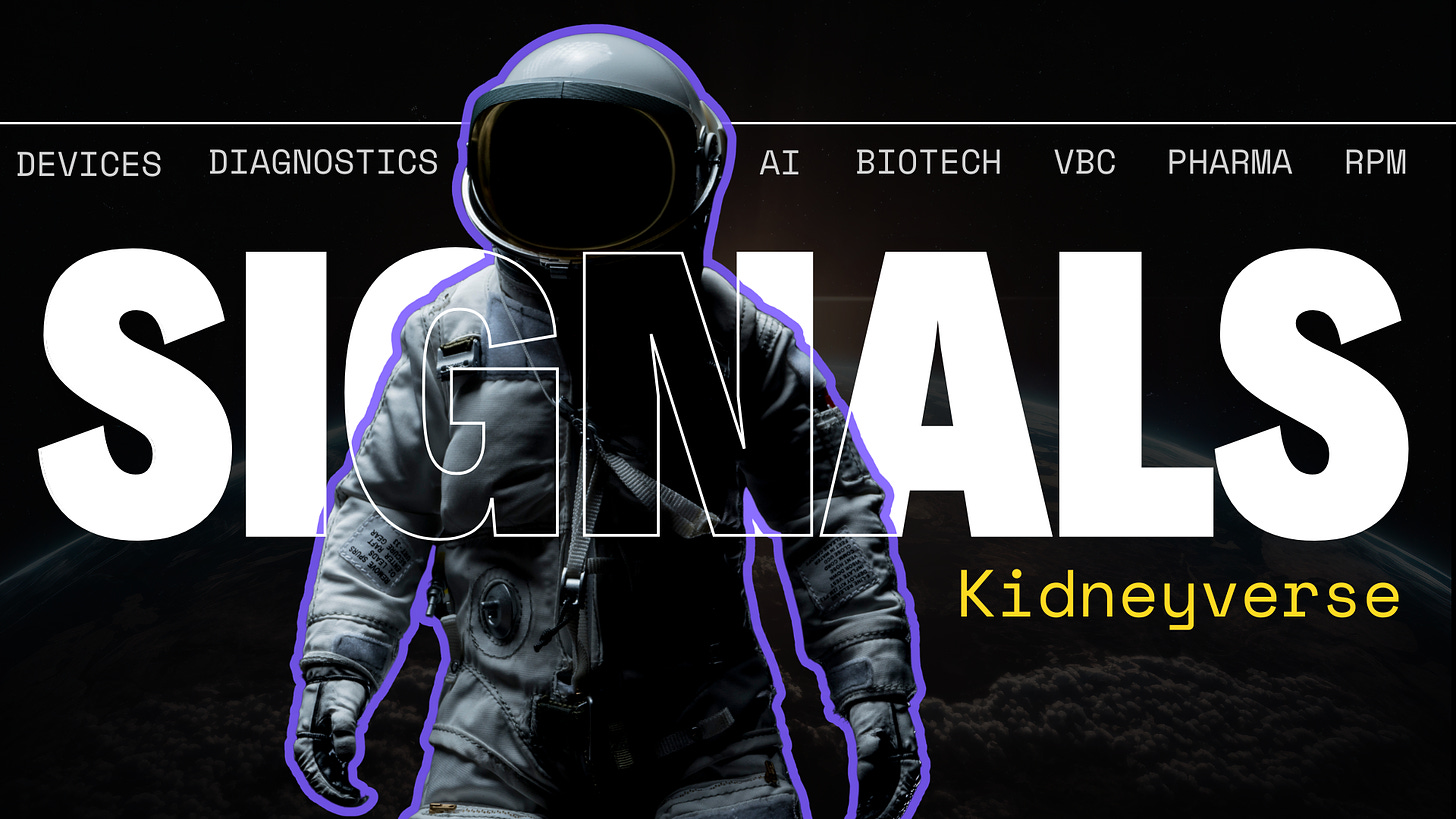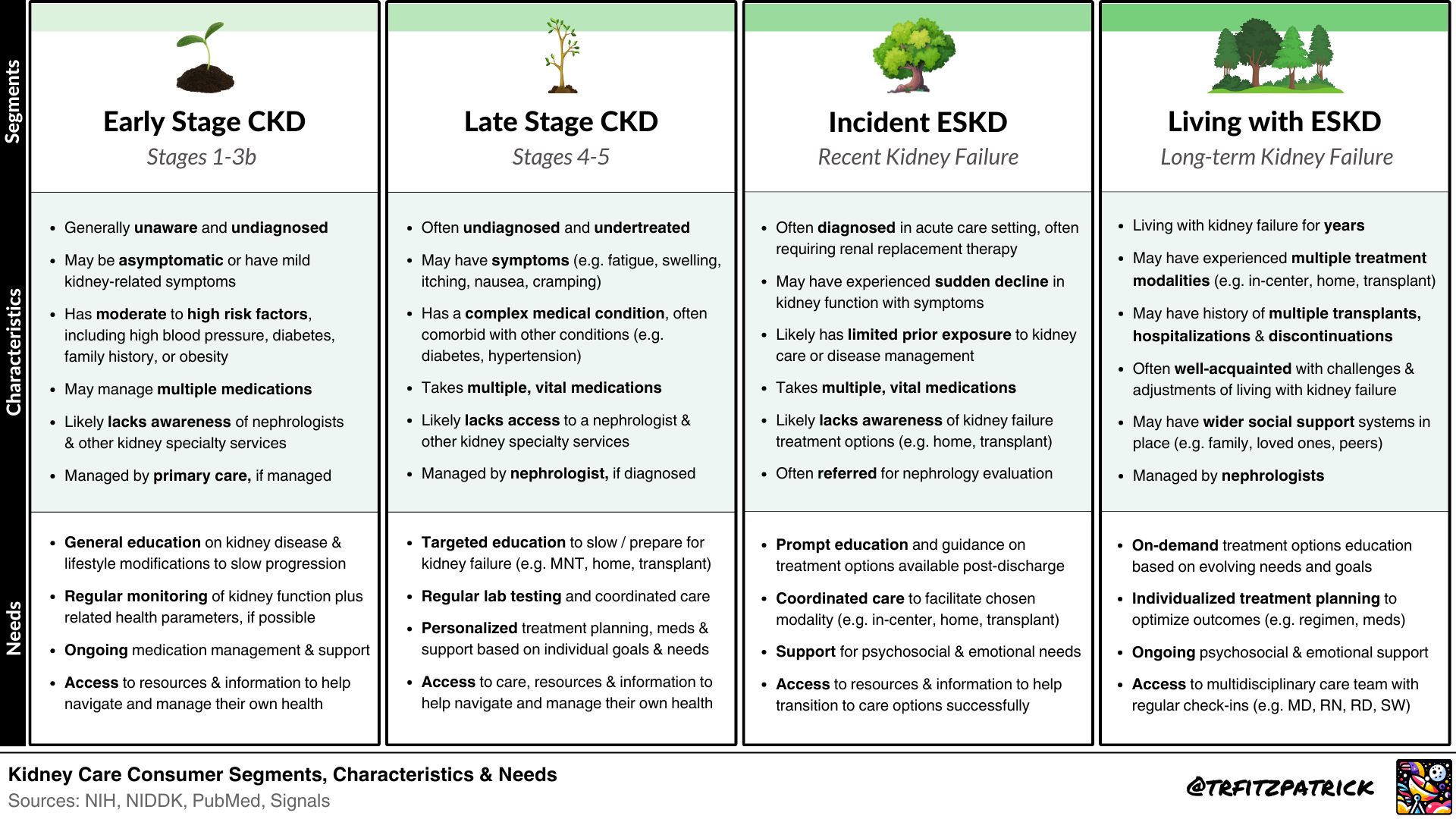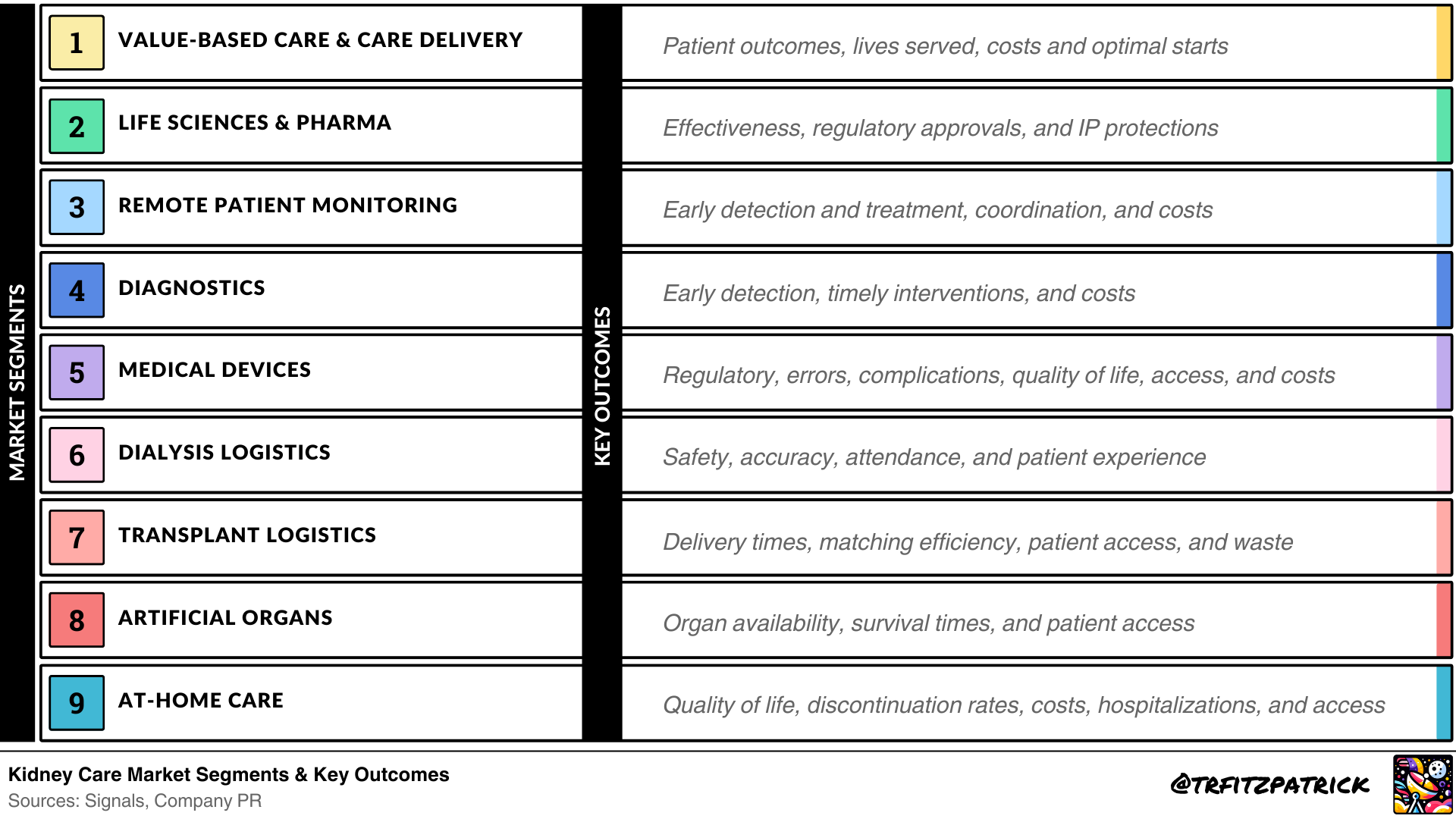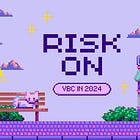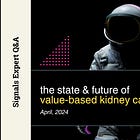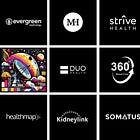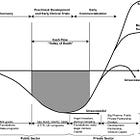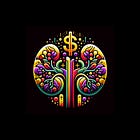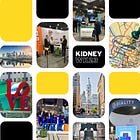Join the future of kidney health.
If you care about global kidney health, you’re in the right place. This page contains Signals across the nephrology landscape, from early detection to value-based care, and rural health to remote patient monitoring. We focus on the problems keeping our kidney community up at night, and the reasons we get out of bed in the morning.
This page is both our blueprint and treasure map to help us find our way through the vast expanse and deliver effective, accessible innovation to the one billion people affected by kidney disease across the globe. So let’s explore the future of kidney care, one idea, innovation, and investment at a time.
We’d love to hear from you— what are you working on in this space?
Navigation Links
Landscape
The landscape of kidney care consumers is diverse, reflecting varying levels of acuity and unique needs. To provide a comprehensive understanding, we categorize kidney care consumers into four distinct segments: Early Stage CKD, Late Stage CKD, Recent Kidney Failure, and Long-Term Kidney Failure.
These consumer segments capture the breadth of individual experience, from those in the earliest stages of CKD to those who have navigated kidney failure for years. Patients within and across those segments have unique characteristics and needs. Enabling a more personalized approach to kidney care delivery starts with understanding individual goals and desires. We map these unique group-level challenges and requirements so that we can reimagine the kidney care journey for individual patients and their loved ones.
It is upon this foundation that we will build our understanding of what’s needed and what’s possible. That’s where care and innovation happen— and where many of you come in.
Market Segments
Now that we have a basic understanding of the complex challenges people face at each stage of kidney disease, let’s talk about solutions.
Investment in kidney care solutions, both public and private, has accelerated since the passing of the 2019 Advancing American Kidney Health initiative. The pace and energy has only increased in the wake of the pandemic, driven by outsized investments into areas like population health and value-based care.
Though in its broadest sense, kidney care companies can be considered as any that allow consumers to better understand, manage, or treat their kidney health with the help of healthcare providers or solutions, I have more narrowly defined these companies into nine primary segments according to their primary functions and endpoints.
Value-Based Care & Care Delivery: Innovations in care delivery models prioritizing care coordination and cost-effectiveness. Key outcomes include patient outcomes, lives served, costs and optimal starts.
Life Sciences & Pharma: Innovations in drug development, life sciences & biotechnology. Key outcomes include effectiveness, regulatory approvals, and IP protections.
Remote Patient Monitoring and Diagnostics: Technologies for remote monitoring and diagnosis of kidney-related conditions. Key outcomes include early detection and treatment, timely interventions, and costs.
Medical Devices: A broad array of hardware solutions from dialysis machines to smart catheters and real-time imaging devices. Key outcomes include regulatory approvals, errors, complications, quality of life, access and costs.
Dialysis Logistics: Dialysis infrastructure includes the facilities, transportation, supplies and lab testing required to perform treatments. Key outcomes include safety, accuracy, attendance, and patient experience.
Transplant Logistics: Technologies and services that enable organ procurement and patient transportation. Key outcomes include organ waste, delivery times, matching efficiency, and patient access.
Artificial Organs: Innovations in artificial organs, including xenotransplants and bioartificial organs. Key outcomes include organ availability, survival times, and patient access.
At-Home Care: Technologies that enable and empower patients to manage their kidney health at home, from dialysis to lab draws and continuous monitoring. Key outcomes include quality of life, discontinuation rates, costs, hospitalizations, and access.
Now that we have the nine market segments and four consumer populations within which these solutions exist, it’s time to talk about Signals.
This is where we turn our attention to the latest advances in kidney care and those who make it all possible. Below you’ll find a list of top articles where I share overviews and analysis on major trends, news, companies, and challenges shaping the Kidneyverse.
Top Signals
The continued growth and momentum in value-based kidney care paints an exciting picture of what’s ahead for providers and patients managing CKD and ESKD. Combined, the companies included in these Signals have raised over $2 billion in outside capital, serve an estimated 700,000 patients, and manage over $15 billion in spend.
[2]. Kidney Capital: Who, When & What Gets Funded In Kidney Care
Data from 14 of the most active investors in kidney care from idea to IPO shows why, how, and when ideas get funded — and who is backing them. “Kidney Capital” is where great ideas, research, products and teams get funded to build the future of kidney care across the globe.
[3]. 90% of kidney disease is undiagnosed – here's how we might fix it
There are currently 850 million people in the world living with chronic kidney disease (CKD), and CKD is predicted to become the fifth global cause of death by 2040. 90% of people with kidney disease don’t even know they have it. Neither do their doctors.
[4]. How to build (more) peer mentor programs in kidney care
A critical gap exists in the support system for individuals living with kidney disease and those who care for them. This post dives into the potential of peer-to-peer (P2P) mentor programs, their role in overcoming access barriers, and the lessons we can glean from successful programs in other areas like cancer, behavioral and mental health care.
[5]. Remote patient monitoring in kidney care
More than 800,000 Americans are living with end stage kidney disease today, 70% of whom are on dialysis. What if we could help clinicians and care teams monitor patients between dialysis treatments and blood draws, and do so without asking patients and care partners to change their routines or take on additional care burden? That's where novel monitoring solutions enter the fold, paving the way for a healthier, safer and more cost-effective future for dialysis patients.
[6]. How should we deliver kidney care in rural America?
One in five Americans and about 86% of the land area in the United States are considered “rural.” Using lessons from the Zuni tribe in New Mexico and the VA’s growing tele-nephrology program, this Signal unpacks h the multi-pronged challenges of workforce shortages, limited access to specialists, and daunting travel distances in rural America.
[7]. (Where) will money flow into kidney care in 2024?
Money is a tool. It's the fuel that allows companies to invest in top talent, new products, and future pipelines. It's also the thing that allows founders and fresh ideas to take flight. But despite billions of dollars invested into kidney care over the last few years, 2024 holds no prisoners and makes no promises. Certain sub-segments continue to get disproportionate levels of funding, while others face mounting losses in the so-called "valley of death" on their path to commercialization.
[8]. Why it's getting harder (and more expensive) to make new drugs
The FDA approved 55 drugs in 2023. You might be thinking: "More than one a week. That's pretty good, right?" Do you know how much pharma companies will spend on R&D this year? Around $200 billion. But here's the kicker: the number of new drugs approved per billion USD spent on R&D has fallen around 80-fold since 1950. Simply put, it costs a lot more money to make drugs today than it did in the past. This post is about “Eroom’s Law,” and what’s being done to address it.
[9]. 10 Reasons for Optimism from Kidney Week 2023
What if I told you there's a conference as big as HLTH, but dedicated to the latest advancements in kidney care? That's exactly what Kidney Week 2023 delivered: 12,000 optimists from across the global kidney community descended on Philadelphia to take part in the annual meeting of the minds. This summary focuses on updates from devices, drugs, and tech-enabled care delivery.
[10]. Tarpeyo is the first fully approved treatment for IgA nephropathy
Two years after securing accelerated approval, Calliditas Therapeutics just became the first fully-approved treatment in the US for IgAN, also known as Berger’s disease. This news recap post from December, 2023 covers nine headlines, four closer looks, and one Visual of the Week from a recent phase 2 trial of empagliflozin working on a medical breakthrough for kidney disease.
Data Room
We built a data room to give you access to the visuals, graphics, and data that bring these insights to life—helping you stay at the forefront of the ideas, innovations, and investments shaping the future of kidney health.
Our content is free to explore, aligning with our mission to expand the Kidneyverse by making kidney health more accessible and actionable for our global community. Reach out with any updates or requests—we’d love to hear from you!
We’re in good company. Your fellow explorers from the Signals universe include 7,000+ clinicians, advocates, innovators and executives from organizations like CMS, CMMI, NIH, NxStage, Fresenius, Baxter, BD, Mozarc, CVS, Optum, Outset, Unity, Meta, ByteDance, BehaVR, XR Health, Alio, Carenostics, Renalytix, Strive, Monogram, Evergreen Nephrology, Satellite, Somatus, Interwell, DaVita, Ochsner, Northwell Health, Redesign Health, VA, ASN, NKF, AKF, Roche, Novartis, AstraZeneca and LSI.
Connect & Amplify
You made it, I’m impressed. If you’ve read this far, I’m willing to bet you have a few ideas and insights about the future of kidney care. Leave a comment and introduce yourself below — and share Signals with your friends and colleagues in the kidney community!

![Signals From [Space]](https://substackcdn.com/image/fetch/e_trim:10:white/e_trim:10:transparent/h_72,c_limit,f_auto,q_auto:good,fl_progressive:steep/https%3A%2F%2Fsubstack-post-media.s3.amazonaws.com%2Fpublic%2Fimages%2F2efc1ef1-ba0b-4ca3-b9f6-a9a790da4b38_1344x256.png)

![Signals From [Space]](https://substackcdn.com/image/fetch/w_36,h_36,c_fill,f_auto,q_auto:good,fl_progressive:steep,g_auto/https%3A%2F%2Fsubstack-post-media.s3.amazonaws.com%2Fpublic%2Fimages%2Fa4736f49-6a20-4fd6-a3de-d48cb4b105f2_375x375.png)

